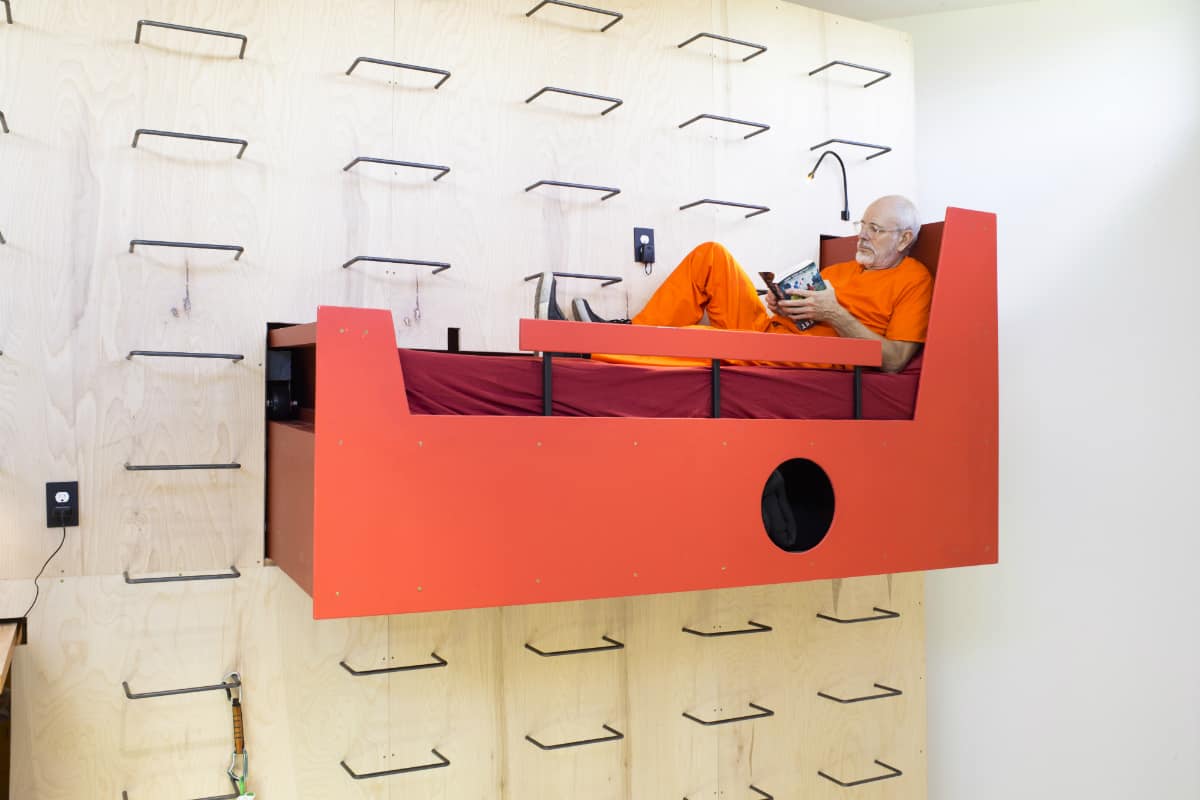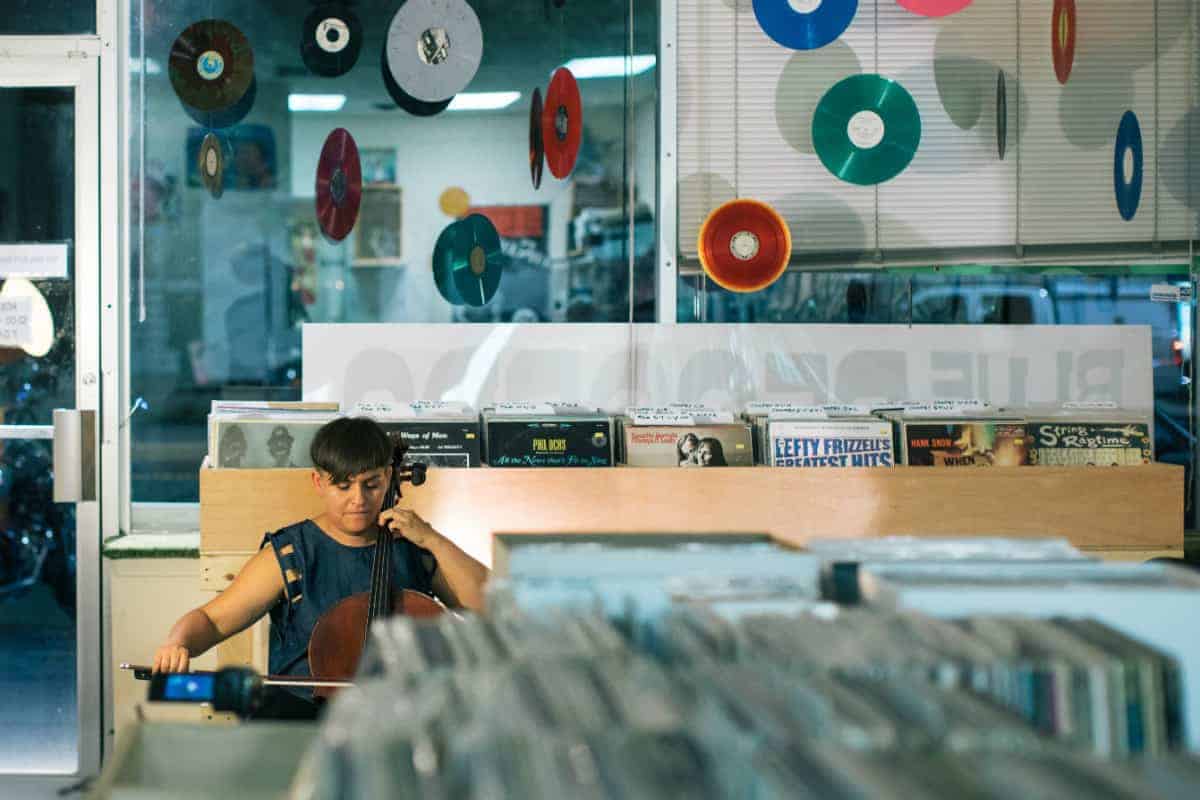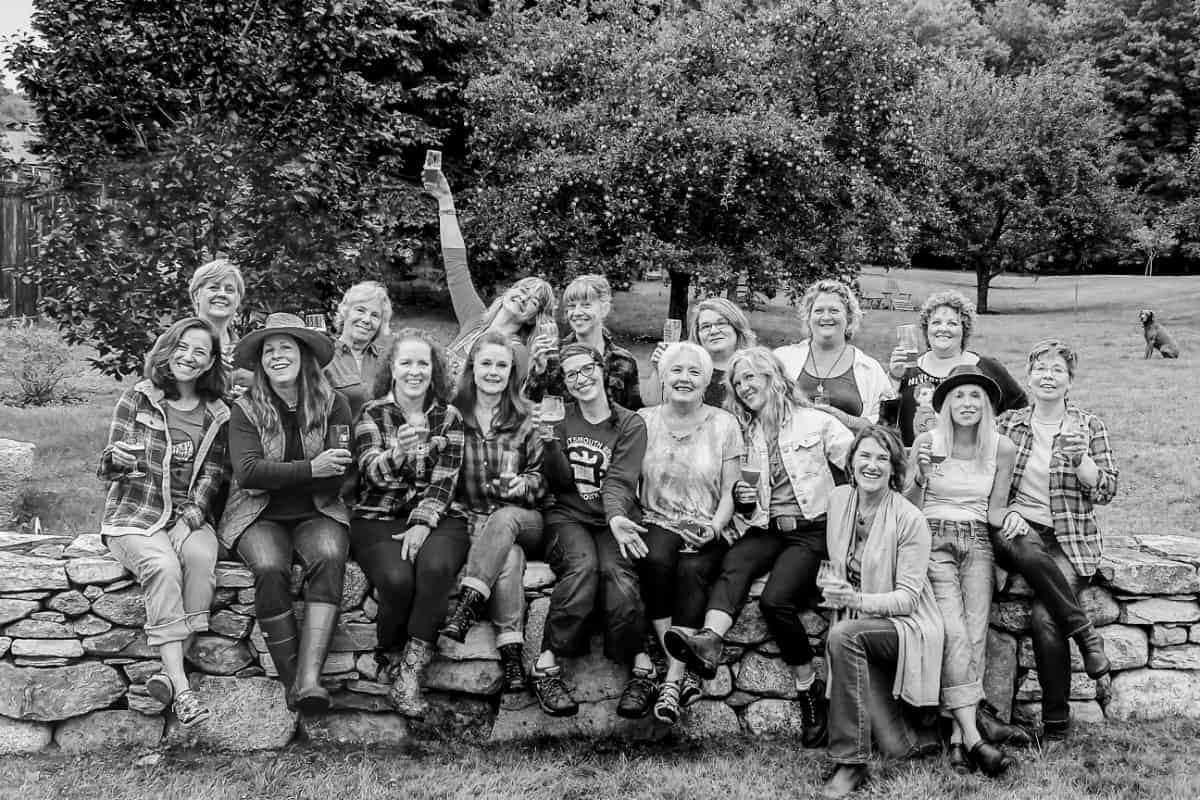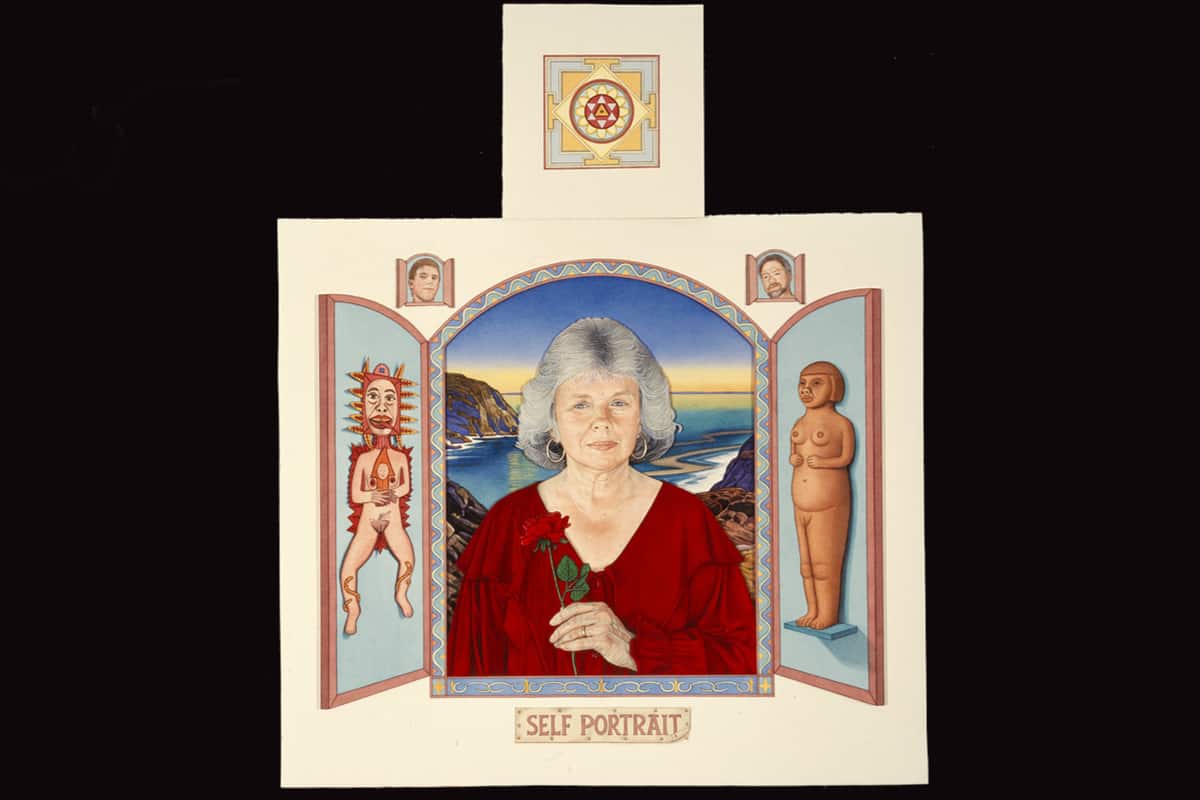Performance architecture artists Ward Shelley and Alex Schweder explore how where we live affects who we are and how we act.
You may be what you eat, but are you also shaped by where you live? That’s part of what performance architecture artists Ward Shelley and Alex Schweder are examining as they live for days at a time in an installation they’ve created in the Aldrich Contemporary Art Museum.
Called Your Turn, the installation features a 23 x 23 foot wall that looks like a house that’s become two dimensional, almost as if its width has been squished by a compactor. A bed, mini-kitchen, table with four chairs, and IKEA chair with lamp sit on different small platforms that slide from one side to the other like large drawers. The critical point is this: there is only one bed, one mini-kitchen, etc. And that means that the men, each of whom “lives” on one side of a wall and can’t see the other person, must communicate when he wants the bed . . . or the bathroom . . . or the chair. These platforms slide from one side to the other like large drawers, but only one man can access a platform at a time. Pull the platform over to your side without first yelling over to your partner, and he could well end up on the floor.
Ward, who hails from Easton, Connecticut, when he’s not on the wall, and Schweder, who is from Brooklyn, are living in the installation for various multi-day stints while the exhibit is up. It is not the first time the men have collaborated in this kind of living-their-art installation: in ReActor, on view at the OMI International Arts Center’s Architecture Field and until August 2018, the men created a narrow rectangular “room” atop a single column that twirls when the wind blows and tilts see-saw like with the shifting weight of its inhabitants. (A video about their time living on ReActor is included in the Aldrich exhibit.) This is the first time, though, that they’ve experienced this kind of divided experienced.
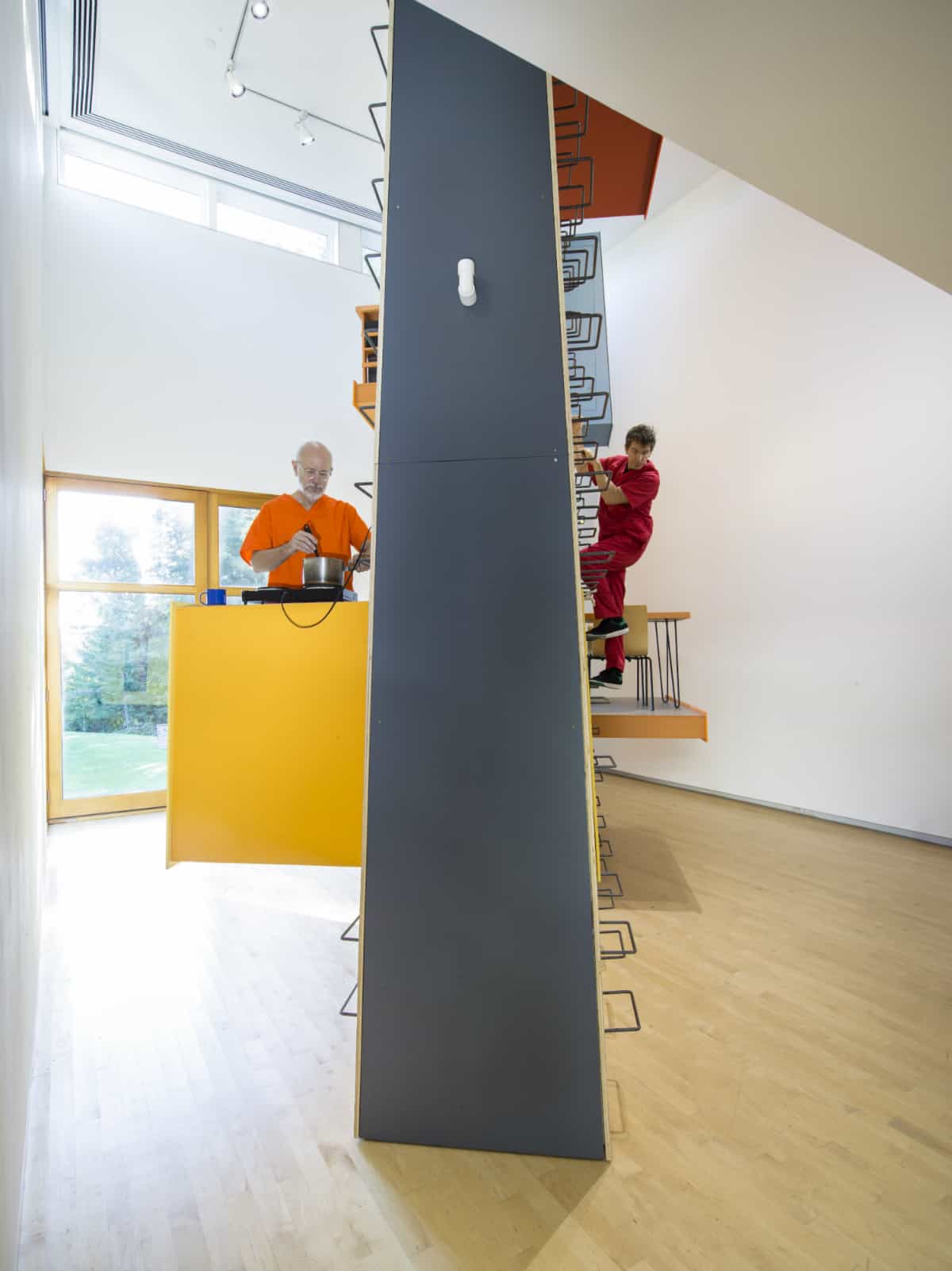
Alex Schweder and Ward Shelley,Your Turn, 2017. Installation view. Photo: Jason Mandella
“This has really turned out to be more about communication than anything,” Ward says, perched in the chair 15 feet above me as we talk. “I’m going to pull out the kitchen, all right?” Schweder yells from the other side, confirming that Ward has not started making his way over to the kitchen by way of the giant staples that allow the men to climb around the wall.
“It’s dependent on other people’s feelings,” Shelley adds, noting that his impaired hearing has only added to the challenge.
When I visit the other side, Schweder, who is an architect, explains the idea of performance architecture further. “Generally speaking it’s a way of approaching a built environment as a question rather than as a problem to solve,” he says. “In the end it’s a way of thinking about architecture through performance art; it’s about breaking habits rather than reaffirming.”
Ward and Schweder have been doing these kinds of installation performances for a decade. “It’s an extreme environment,” Shelley says. “We’re not sure what it will do to use. It’s about what we become in this situation. We started doing performance architecture before we had an idea of what it was.”
Shelley quotes Winston Churchill as part of the inspiration behind their environment theories: “First we shape our buildings. Thereafter they shape us.” “Humans shape their environments,” Shelley explains. “It becomes feedback in a loop of changes. Our buildings are like scripts for social behaviors. We could compose different scripts.”
Your Turn explores the idea of balance. “People have to react to each other to keep peace and balance, Shelley says. “Balance manifests itself in different ways. Our pieces are about this.” Ward places his arm on the arm rest: “It’s about the dance of who gets to put his elbow down there.”
The potential implications can go beyond their wall. How do people negotiate things, such as space, that are scarce? “The armrest may be inconsequential,” Shelley says, “but for bigger things the issue is exponential.” On the wall, sharing is a necessitated syncopated coordination. “What better place than a wall to explore this?” Shelley says. “Walls are having their moment,” referencing to Trump’s proposed border wall.
Dressed in orange and red jumpsuits, the men look at little like prisoners. Ward says their attire is for simplicity of living rather than making a statement. “It’s our own motif,” he says. “It’s a way for people to find visual continuity. We don’t feel we are in prison.”
Shelley and Schweder are scheduled to live in Your Turn, November 30th-December 2nd, and December 8th-10th. To check additional times for their installation residency, visit the Aldrich Contemporary Art Museum website.

